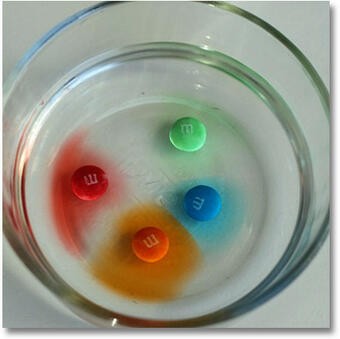Water’s remarkable ability to dissolve a vast array of substances earns it the title of “universal solvent.” This unique property plays a crucial role in sustaining life on Earth and impacting various natural processes. But why does water possess this exceptional dissolving power? Let’s delve into the scientific reasons behind water’s remarkable solvency.
The Polarity of Water: The Key to Its Dissolving Power
Water’s exceptional solvent capabilities stem from its unique molecular structure. A water molecule (H2O) consists of two hydrogen atoms and one oxygen atom. The arrangement of these atoms creates a polar molecule, meaning it has a positive and a negative end. The oxygen atom attracts electrons more strongly than the hydrogen atoms, resulting in a slightly negative charge on the oxygen end and a slightly positive charge on the hydrogen end.
This polarity allows water molecules to interact with a wide range of substances, especially those with ionic or polar characteristics. For instance, when salt (sodium chloride, NaCl) is added to water, the positive ends of water molecules attract the negatively charged chloride ions, while the negative ends attract the positively charged sodium ions. This attraction overcomes the forces holding the sodium and chloride ions together, causing the salt to dissolve.
The Importance of Water as a Solvent
Water’s role as a universal solvent is vital for life and numerous natural processes. In biological systems, water dissolves essential nutrients, minerals, and other substances, allowing them to be transported throughout organisms. It also facilitates chemical reactions necessary for life.
In the environment, water dissolves minerals and rocks, shaping landscapes and transporting vital elements through ecosystems. Furthermore, water’s ability to dissolve gases like carbon dioxide plays a crucial role in regulating the Earth’s climate.
Water and the Human Body: A Life-Sustaining Partnership
Water’s solvent properties are essential for human health. Our kidneys rely on water to filter waste products from the blood. The dissolved waste is then excreted from the body in urine. Without water’s ability to dissolve these substances, our bodies would be unable to eliminate toxins effectively.
Dissolving Salt in Water: A Closer Look
The process of dissolving salt in water exemplifies water’s powerful solvent action. The strong attraction between water molecules and the charged ions in salt overcomes the ionic bonds holding the salt crystal together. The water molecules surround the individual ions, effectively separating them and forming a homogeneous solution. This process, driven by the polarity of water, showcases its effectiveness in dissolving ionic compounds.
Conclusion
Water’s designation as the “universal solvent” is a testament to its unparalleled ability to dissolve a wide range of substances. This remarkable property, rooted in its polar molecular structure, is essential for life, environmental processes, and numerous industrial applications. Understanding why water is such an effective solvent provides insights into its fundamental role in shaping our world.

